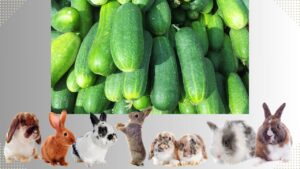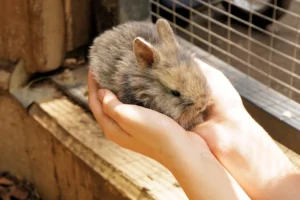Did you know that breeding rabbit siblings can pose significant risks?
In this article, we will explore the genetic issues involved in breeding rabbits from the same litter. By understanding the factors to consider and the potential health and wellness considerations, you can make informed decisions about responsible breeding practices for rabbit siblings.
So, if you’re wondering whether it’s safe to breed rabbit siblings, read on to gain valuable insights and ensure the well-being of these adorable creatures.
In This Article
- 1 Key Takeaways
- 2 The Risks of Breeding Sibling Rabbits
- 3 Understanding Genetic Issues in Rabbit Breeding
- 4 Factors to Consider Before Breeding Siblings
- 5 Health and Wellness Considerations for Breeding Sibling Rabbits
- 6 Responsible Breeding Practices for Rabbit Siblings
- 7 Frequently Asked Questions
- 7.1 How Long Should You Wait After Breeding Sibling Rabbits Before Breeding Them Again?
- 7.2 Is It Safe to Breed Sibling Rabbits From Different Litters?
- 7.3 Are There Any Specific Health Tests That Should Be Done Before Breeding Sibling Rabbits?
- 7.4 What Are the Potential Long-Term Effects on the Offspring When Breeding Sibling Rabbits?
- 7.5 Can Breeding Sibling Rabbits Increase the Risk of Genetic Diseases in Future Generations?
Key Takeaways
- Breeding sibling rabbits increases the risk of genetic health issues and the likelihood of inheriting harmful genetic mutations or diseases.
- Inbreeding can lead to decreased fertility and weakened immune systems in offspring, as well as increased susceptibility to various illnesses and disorders.
- Inbreeding depression, which reduces overall fitness and vitality of the offspring, can occur over successive generations.
- Responsible breeding practices involve avoiding excessive inbreeding, maintaining a diverse gene pool, and prioritizing the health and well-being of the rabbits.
The Risks of Breeding Sibling Rabbits
You should avoid breeding sibling rabbits due to the increased risk of genetic health issues. Inbreeding consequences in rabbit breeding can lead to a variety of long-term effects that can negatively impact the overall health and survival of the offspring.
When siblings are bred together, they share a higher percentage of the same genes, increasing the likelihood of inheriting harmful genetic mutations or diseases. This can result in decreased fertility, weakened immune systems, and an increased susceptibility to various illnesses and disorders.
Additionally, breeding siblings can lead to a phenomenon called ‘inbreeding depression,’ which refers to the reduced overall fitness and vitality of the offspring.
Understanding Genetic Issues in Rabbit Breeding
Breeding rabbits with genetic issues can result in a higher likelihood of offspring inheriting harmful mutations or diseases, and it’s important to understand these issues in rabbit breeding. When it comes to genetic disorders, it’s crucial to have a comprehensive understanding of the potential risks and consequences.
Here are some key points to consider:
- Genetic Disorders: Breeding rabbits with known genetic disorders can pass on these issues to their offspring, potentially leading to health problems and reduced lifespan. It’s essential to identify and avoid breeding rabbits with such disorders to ensure the overall health and well-being of the offspring.
- Inbreeding Effects: Inbreeding, or breeding closely related rabbits, can increase the likelihood of genetic disorders. This is because inbreeding amplifies the presence of harmful recessive genes. It’s important to avoid excessive inbreeding and maintain a diverse gene pool to minimize the risk of inherited disorders.
- Genetic Testing: Conducting genetic testing can help identify potential genetic issues in rabbits before breeding. By screening for specific mutations or diseases, breeders can make informed decisions and avoid breeding rabbits with known genetic disorders.
Understanding the impact of genetic disorders and the effects of inbreeding is crucial in rabbit breeding. By being aware of these issues and taking necessary precautions, breeders can ensure the health and well-being of future generations of rabbits.
Factors to Consider Before Breeding Siblings
Before deciding to breed siblings, it’s important to consider the potential genetic risks involved. Breeding siblings can increase the likelihood of inheriting genetic disorders in offspring. When two genetically related individuals mate, there’s a higher chance of passing on recessive genes that may result in health problems. This can lead to an increased risk of potential genetic disorders in the offspring.
From an ethical standpoint, breeding siblings raises concerns about the well-being of the animals involved. It’s essential to prioritize the welfare of the animals and ensure that they aren’t subjected to unnecessary health risks. Responsible breeding practices involve diversifying the gene pool and avoiding inbreeding to minimize the prevalence of genetic disorders and promote overall health and vitality in the offspring.
Health and Wellness Considerations for Breeding Sibling Rabbits
When considering breeding sibling rabbits, it’s crucial to prioritize their health and wellness. Inbreeding risks in rabbit breeding can have serious long-term consequences, so it’s important to understand the potential risks involved.
- Inbreeding increases the likelihood of genetic abnormalities and health issues in offspring.
- Breeding sibling rabbits can lead to reduced fertility and a higher mortality rate among the offspring.
- Inbreeding depression, which is the reduction in fitness and vitality of the population, can occur over successive generations.
To ensure the health and well-being of the rabbits, it’s recommended to avoid breeding siblings whenever possible. If breeding siblings is necessary, careful selection and genetic testing should be done to minimize the risks associated with inbreeding.
Responsible Breeding Practices for Rabbit Siblings
Ensure the well-being of your rabbit siblings by implementing responsible breeding practices that prioritize their health and genetic diversity. When considering breeding sibling rabbits, ethical concerns arise due to the potential risks associated with inbreeding. Inbreeding can lead to an increased likelihood of genetic disorders and reduced overall fitness in the offspring.
To address these concerns, alternative breeding options should be explored. Outcrossing, which involves breeding rabbits from different genetic backgrounds, can help introduce new genetic material and increase genetic diversity. This reduces the risk of inherited health problems and promotes stronger overall health in the offspring.
Additionally, genetic testing can be utilized to identify any potential genetic issues before breeding, ensuring the well-being of the rabbit siblings and preventing the transmission of harmful traits.
Frequently Asked Questions
How Long Should You Wait After Breeding Sibling Rabbits Before Breeding Them Again?
After breeding sibling rabbits, you should wait for a minimum of 6 to 8 months before breeding them again. Breeding siblings too soon can increase the risk of genetic abnormalities and health issues in the offspring.
Is It Safe to Breed Sibling Rabbits From Different Litters?
Breeding sibling rabbits from different litters is generally considered safe, but it raises concerns about breeding ethics and genetic diversity. It’s important to carefully consider the long-term impact on the rabbit population.
Are There Any Specific Health Tests That Should Be Done Before Breeding Sibling Rabbits?
Before breeding sibling rabbits, it is crucial to consider the health risks and genetic diversity. It is recommended to perform specific health tests to ensure the well-being of the offspring and maintain a healthy population.
What Are the Potential Long-Term Effects on the Offspring When Breeding Sibling Rabbits?
Breeding rabbit siblings can have potential ethical concerns due to the increased risk of genetic disorders and reduced genetic diversity. Long-term effects on the offspring may include higher rates of disease and decreased overall fitness.
Can Breeding Sibling Rabbits Increase the Risk of Genetic Diseases in Future Generations?
Breeding rabbit siblings can increase the risk of genetic diseases in future generations. To minimize these risks, take breeding precautions such as selecting unrelated rabbits and introducing new bloodlines into your breeding program.





